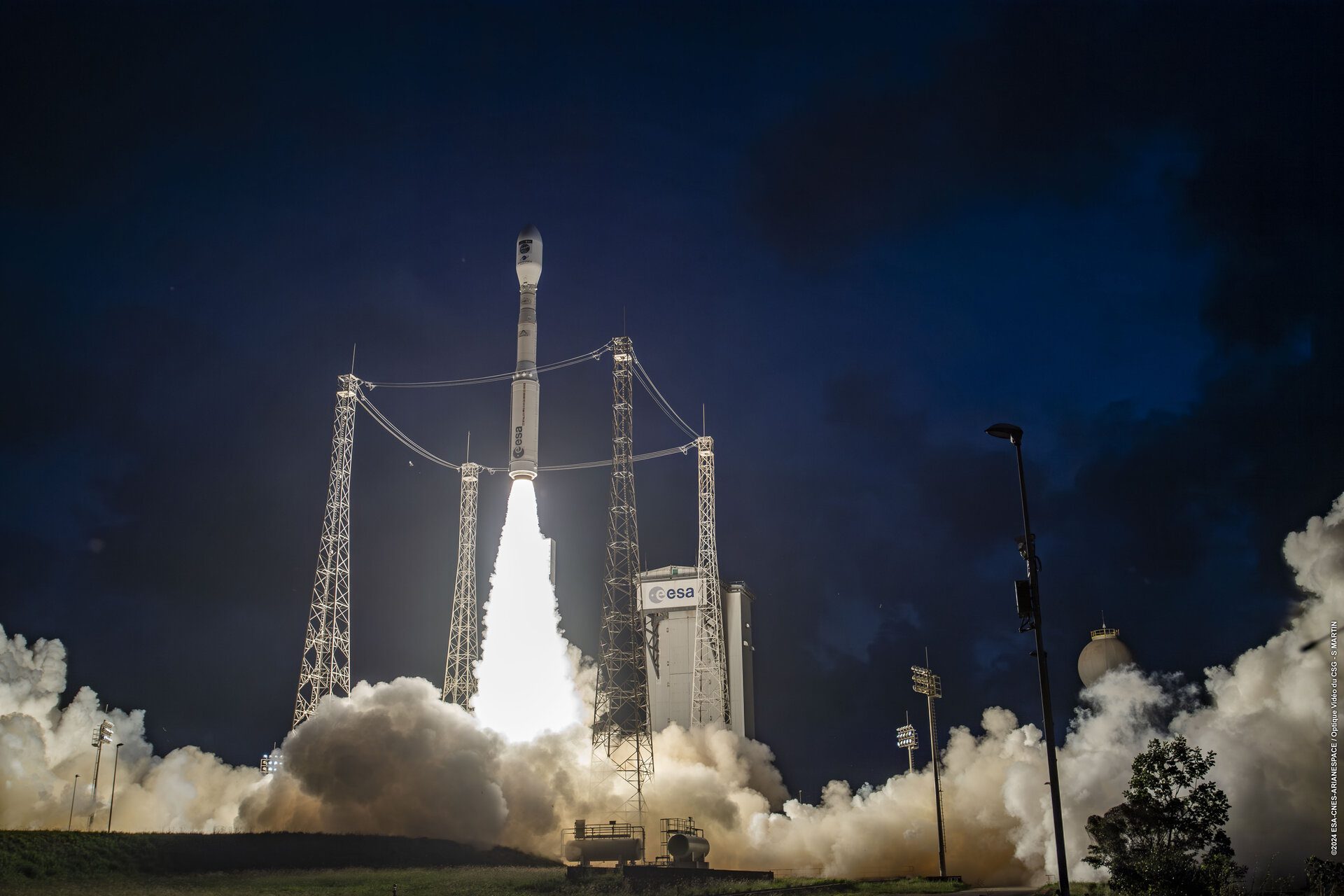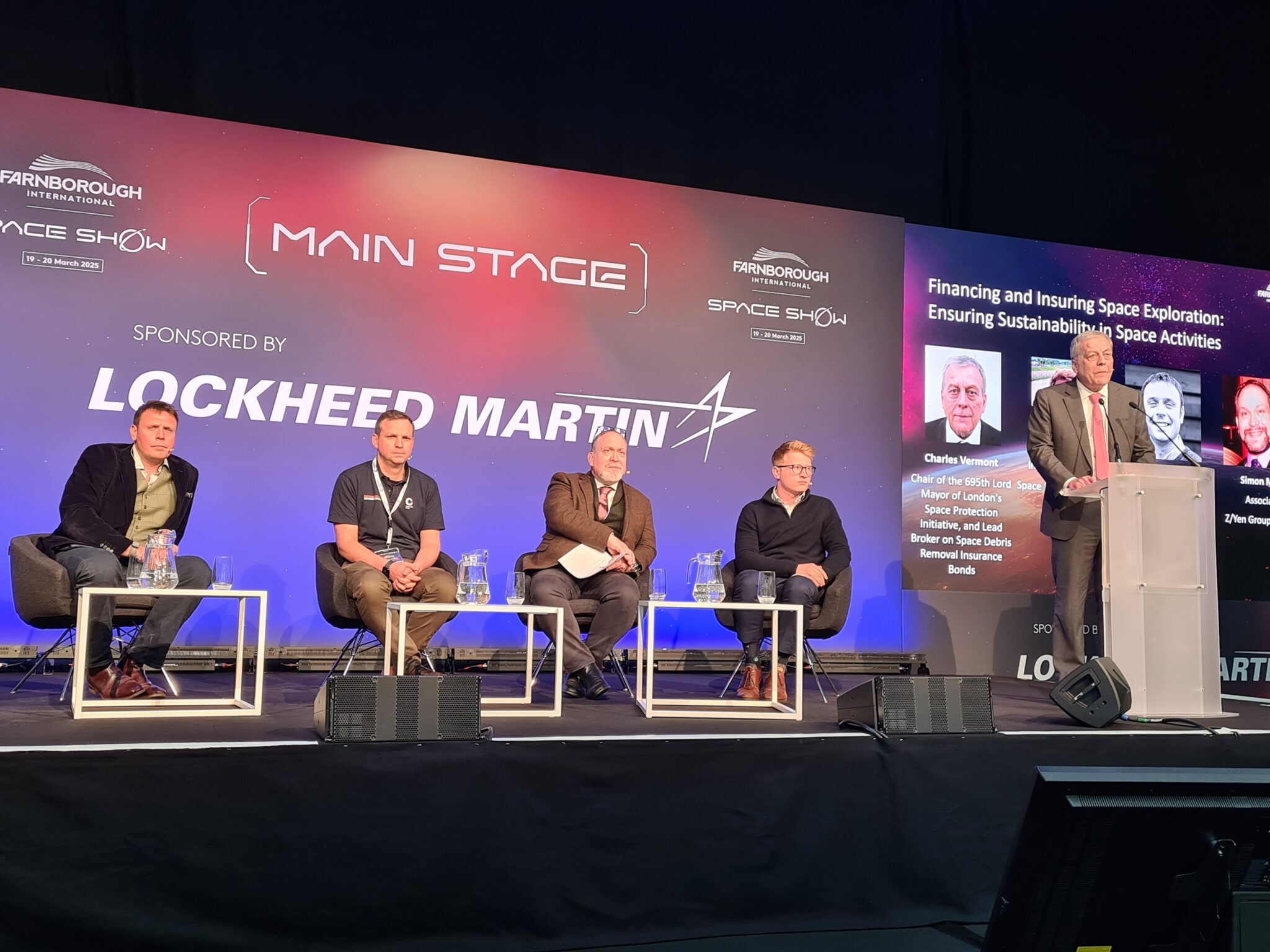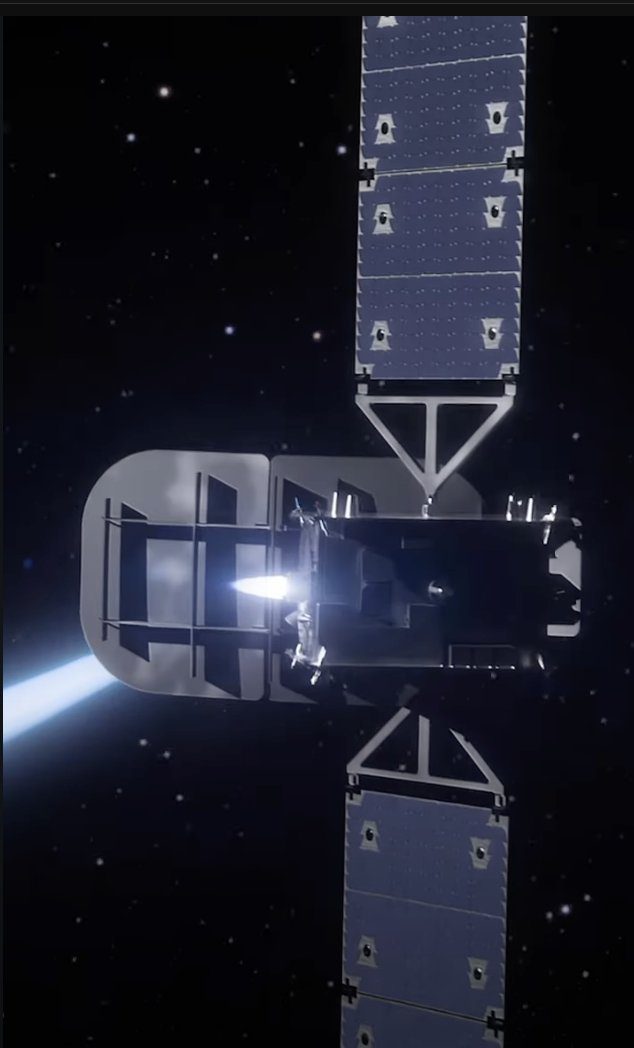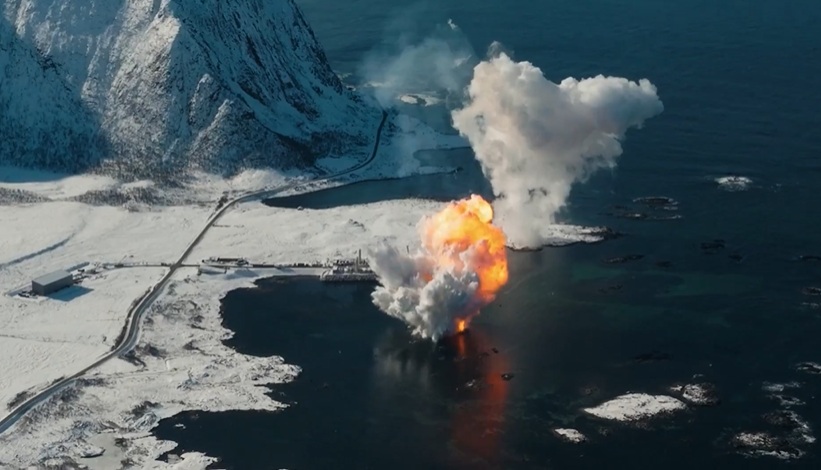Europe’s small solid rocket, Vega C, has returned to flight for the first time in two years since it suffered a launch failure. The rocket took off from Kourou, French Guiana on 5 December at 2120 GMT. It carried the Sentinel 1C radar satellite, built by Thales Alenia, as part of the European Copernicus Earth observation programme.
The last time Vega C flew, in December 2022, things did not end well. Two imaging satellites, Pleiades NEO 5 and 6, were lost in the unsuccessful flight, triggering an insurance loss of US$225 million for the pair.

Vega C launches Sentinel 1C Courtesy: ESA
The root of the problem turned out to be a carbon-carbon (C-C) nozzle in the Zefiro-40 solid rocket motor (the second stage). The cause of the pressure decrease, and the subsequent launch failure, was the deterioration/widening of the Zefiro 40’s exhaust nozzle throat insert. An investigative committee found that a lack of homogeneity in the C-C material resulted in unexpectedly high thermo-mechanical erosion (over-erosion) of the C-C insert. The problem persisted during a static fire test even after material in the nozzle was replaced. The need for another redesign further slowed the launch programme.
Vega-C’s return to flight is an important milestone for the launch vehicle, not only to redress the C-C nozzle design but also to rectify Sentinel 1B’s in-orbit failure in 2021. A power systems fault affected the 28V regulated bus of the satellite’s C-band synthetic aperture radar (SAR) antenna power supply unit. The main power system and its back-up for the SAR antenna failed simultaneously, prematurely ending the spacecraft’s mission. Sentinel 1C, carried onboard Vega-C, is a replacement for Sentinel 1B.
Comment by David Todd: Insurers remain wary of Vega C launches, especially after a bitter experience with Vega, its predecessor. Vega-C’s return to flight will increase their confidence in the rocket.








